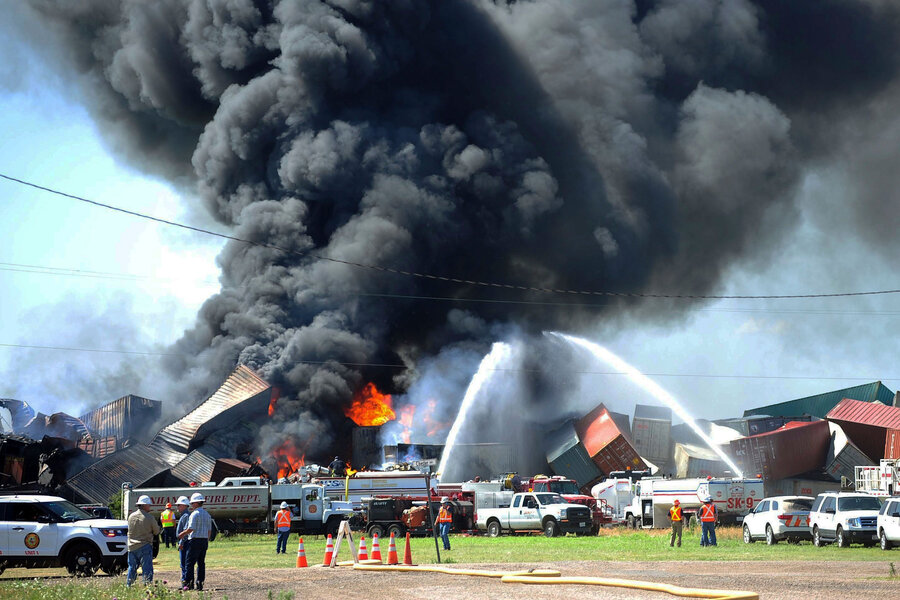Missed signal led to Texas train crash: Could technology have stopped it?
Loading...
| Dallas
A train failed to heed a stop signal before it barreled head-on into another freight train last month in the Texas Panhandle, killing three, according to a preliminary federal report released Thursday.
An eastbound BNSF Railway train failed to slow at a yellow warning signal on June 28 and then continued past a red stop signal before striking an oncoming BNSF train, inspectors for the National Transportation Safety Board said in the report.
The eastbound train, bound for Chicago, was supposed to stop and allow the Los Angeles-bound train to pass. It was traveling just over 60 mph when it passed the yellow signal, though trains are not supposed to travel any faster than 40 mph at a yellow signal so that they can stop in time at a red signal. The train was traveling about 65 mph when it passed the stop signal.
NTSB spokesman Terry Williams said it's not clear how far beyond the stop signal that the point of impact occurred.
"We're still in the gathering phase of this investigation," he said, adding that a final NTSB report will be released at some point next year. He declined to comment further.
The collision occurred outside the town of Panhandle, about 25 miles northeast of Amarillo. Each train was carrying two crew members. One jumped to safety, the other three died.
BNSF estimates the damage at $16 million, according to the report. The eastbound train was pulling 56 loaded cars and the other train had 54 cars – all carrying stacked containers of consumer goods, like paper products, clothing, televisions and computers.
The collision triggered a fireball and caused containers and cars to tumble onto one another in a pileup. Freight cars derailed and were strewn along with containers about 400 yards from the collision site. Authorities have previously said the eastbound train had stopped in Amarillo to refuel, and that diesel fuel contributed to a fire that burned for hours.
The track has since reopened, BNSF spokesman Joe Faust said, and crews are hoping to have all the debris cleared later this month.
It's unclear why the crew of the eastbound train did not stop at the signal and Faust referred questions about the cause of the wreck to the NTSB.
BNSF has pledged to meet a 2018 federal deadline to adopt positive train control (PTC) technology that relies on GPS, wireless radio and computers to monitor trainpositions and automatically slow or stop ones that are in danger of colliding, derailing due to excessive speed or about to enter track where crews are working or that is off limits.
A PTC system is scheduled to be operational by BNSF in the area where the collision occurred by the end of this year, the NTSB said in the report.
The delays in installation of PTC systems have troubled railroad officials each time a periodic train wreck occurs, as safety specialists insist the technology could help save lives, The Christian Science Monitor wrote:
Safety advocates have pushed for various types of positive train control for decades, yet installation has been slow. The high-profile nature of last year's accident near Philadelphia, among other derailment accidents that investigators say PTC would have prevented, may put the nation's railways on track for PTC implementation....
Congress has been pushing this technology, which NTSB investigators vehemently insisted would have saved lives in this and 145 other cases since 1969, for years. In 2008, Congress required every railroad offering passenger service or hazardous materials through cities to install PTC by 2015. Most railroads missed the deadline. For Amtrak, it was a question of money, and while other railroads resisted for their own reasons, the deadline was delayed to 2018.
Last month's accident was at least the second in recent years involving BNSF trains striking one another. In September 2013, three were involved in a wreck near Amarillo that injured five crew members, according to a separate NTSB report. The federal agency in that incident faulted the crew in one train for improperly proceeding past a signal and striking the rear of a stationary train.







